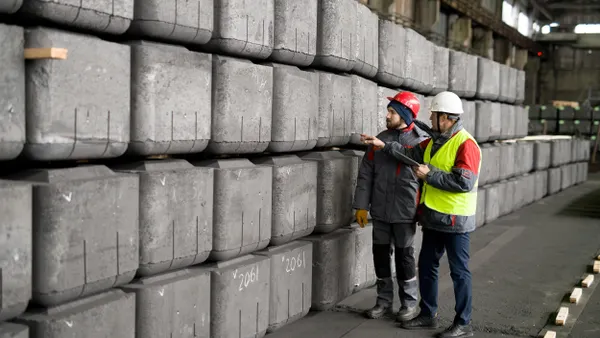Electronic invoicing is changing the business landscape tremendously–and nearly half of companies– including those in the manufacturing industry– aren’t ready. Although the current change affects organizations operating in specific countries, as e-invoicing becomes more widespread, this mandate is poised to become a global standard.
Even if e-invoicing isn’t currently required for manufacturing companies in the United States and Canada, businesses here should still stay familiar with the evolving regulations, understand how these changes can affect business, and take steps to become e-invoice compliant.
The global e-invoicing mandate
When manufacturers bill their business clients, they may send an email with an attachment or snail mail paper invoices or PDFs. As manufacturing companies increase their digital capabilities, they streamline the invoicing process by sending electronic invoices. This process reduces paper, speeds approval, and decreases mistakes and costs.
But manufacturers have yet another compelling reason for e-invoicing— a growing governmental mandate.
The e-invoicing mandate is a long time coming. It began ten years ago in Italy as an effort to create more transparency between a company and its customers and to address VAT discrepancies. Italy started with mandates for business-to-government transactions. Five years later, Italy expanded the requirement to include B2B and B2C interactions. Other nations soon followed.
Today, more than 80 countries have imposed e-invoicing mandates on businesses, and that number is only expected to grow. Companies with locations in any affected country or that do business with organizations in those areas must comply. Even companies that are not currently impacted should assess their readiness for meeting the global e-invoicing mandates.
Difficulties with e-invoicing
Despite the benefits – and requirements of e-invoicing, it can still be tricky for companies to ensure they stay compliant. In a recent survey, nearly one-half of companies said they still invoice by paper. Not only do they need to digitize their processes, but they must also navigate the evolving and sometimes contradictory requirements.
Even though various countries may be aligned on the concept of e-invoicing, many have different ways they want it done. As a result, each invoice must comply with each requirement.
Complexities of e-invoicing
Switching to e-invoicing is more complicated than just switching bills to being online.
For example, in France’s mandate, large and medium businesses have a different implementation date than do small enterprises. Germany has 16 federal states and they have their own e-invoicing regulations. Many Latin American countries are leaders in requiring e-invoicing, but others are in multiple implementation stages.
If a company is doing business with multiple partners in various countries, keeping up with each location’s requirements can be a daunting task. Yet it is essential to get e-invoicing right. Those companies that don’t, can get fined. Governments may also delay payments to non-compliant organizations– which can significantly limit their cash flow.
Compliance becomes more difficult when there’s confusion over who heads the process. If a U.S. manufacturer has overseas locations that are affected by the mandates, the manufacturer has to determine who takes the lead: the subsidiary, which may be more familiar with the country’s requirements or corporate headquarters, which can consolidate processes across multiple countries, but may not be as familiar with each country’s mandate intricacies. To help with this complexity, companies may also use global providers with the experience and knowledge to navigate the evolving requirements.
It’s important to note that e-invoicing does more than allow a business to stay compliant. It allows companies to streamline their business process, making it easier to exchange documents with trading partners, decreasing the likelihood of mistakes and making the payment cycle faster.
As e-invoicing increases globally, manufacturing businesses must ensure they prepare for the changes.
How U.S. and Canadian businesses can get ready for e-invoicing
- Know the current e-invoicing regulations. Many companies aren’t familiar with the mandates and can be caught unaware. Stay up-to-date on shifting regulations in the manufacturing industry by monitoring government websites and industry publications.
- Look at your current invoicing system. If you currently use an e-invoicing system, look at factors such as data format, integration capabilities, security, and storage requirements to see how compatible the current system is with the new requirements and if gaps exist.
- Evaluate e-invoicing providers that offer legal compliance with the myriad of regulations.
- Implement and test the new process, including training employees on the procedures. Do pilot tests to ensure the new process integrates with the entire system.
- Assess and ramp up current security and privacy measures. E-invoicing mandates often have heightened requirements to protect sensitive information and to follow enhanced privacy regulations.
E-invoicing is becoming a global standard. Whether or not businesses are currently required to comply to the mandate, companies that implement e-invoicing can optimize their business performance and be ready for the future.










